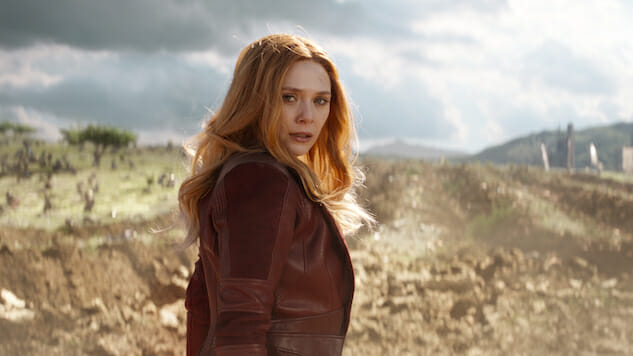Introducing Endless Mode: A New Games & Anime Site from Paste
Marvel Studios certainly made the most of their time in Hall H during this year’s San Diego Comic Con by introducing a robust schedule for its upcoming Phase 4. But one of the most intriguing things about life in a post-Endgame world is that parent company Disney is finally, meaningfully connecting the Marvel TV and movie worlds by taking advantage of its upcoming streaming service, Disney+. The synergy here is obvious: If you are contributing to the $18 billion that the MCU has made at the box office over the last decade and want to see more, just pay $6.99 a month for the continued stories of your faves.
This more pointed movie tie-in is a major change from the way that Marvel has operated its TV and movie divisions in the past. When ABC’s Agents of S.H.I.E.L.D. first premiered, it had one connecting character (Agent Coulson) but no other plans to invite the stars of the TV show into the film world. (There was no way that the film stars were going to do cameos on broadcast, either.) That show danced around even discussing The Avengers, and it became very clear very quickly that because of the vastly different production schedules, S.H.I.E.L.D. would not be able to set up or react to events in the MCU in a way that made any sense time-wise. Thus, it went its own way for the better and left its film connections far behind.
When Marvel launched its Netflix series (Jessica Jones, Daredevil, Luke Cage, Iron Fist, and The Punisher), there was again the hope that these TV characters might play some kind of role in the larger Avengers universe. But not only did those big-name characters not know anything about those New York residents, most of them didn’t even know about each other—or continue to have any kind of meaningful connection—outside of the disappointing team-up of The Defenders. What was perhaps most surprising was the Netflix shows, like S.H.I.E.L.D. before it, hesitated to call the movie heroes by name, other than occasionally and cryptically mentioning “the big green guy” or “the one with the hammer.” The assaults on Earth that played out via various Marvel movies didn’t translate to the TV worlds, which felt increasingly disconnected from the overall storytelling.
As Marvel continued to expand their TV series, including the ill-advised Inhumans on ABC, Hulu’s Runaways, Freeform’s Cloak and Dagger, Fox’s The Gifted and FX’s trippy Legion, there was no longer a pretense or expectation that these worlds were in any way connected to the films or to each other, aside from airing on Disney-owned networks. The MCU was also growing larger and more unwieldy, culminating of course with Avengers: Endgame. It seemed like that universe had just grown too large to accommodate all of these expansive properties.
And yet, with Phase 4, Disney seems ready to use TV as a way to pointedly link the films of the MCU, balancing schedules and production times to create an interconnected viewing experience. It’s all devilishly smart. The first five Disney+ TV series that will be tied into the MCU star characters who aren’t maybe big enough to get their own movies, or whose stories are strange or interesting enough to explore in ways that a movie’s runtime cannot: The Falcon and the Winter Soldier (Fall 2020), Loki (Spring 2021), WandaVision (2021), What If …? (Summer 2021), and Hawkeye (Fall 2021).
Though details are generally sparse, the two most interesting property expansions so far are WandaVision (because Wanda will also be appearing subsequently in the movie Doctor Strange and the Multiverse of Madness, a direct tie-in, which also may be true of Loki and Thor 4), and the animated series What If…? which will explore alternate storylines within the MCU using the original voice cast. With its TV series, Disney can experiment with the viability of some of Marvel’s more bizarre properties, choosing then to continue them on TV or move them back into the film realm. Either way, it’s a completely different strategy than what we’ve seen in the past.
One could also see the casting announcement this weekend of Mahershala Ali as Blade as a final death knell to any connection between the MCU and Netflix’s Marvel series, as Ali played the Luke Cage villain Cottonmouth. But really, it’s more of a confirmation that Disney is moving forward with a new playbook and leaving any old connections behind. The fact that these new TV series’ premiere seasons were announced in tandem with the movie schedule, even interspersed on the same graphic, is a big change. Even though Disney still fully owns the box office, they also see the writing on the wall; the way people consume media has changed drastically in the last few years. But the time Phase 4 closes out in the late fall of 2021, who knows? Disney+ may be more powerful than the theatrical releases.
Allison Keene is the TV Editor of Paste Magazine.
For more television talk, pop culture chat and general japery, you can follow her @keeneTV